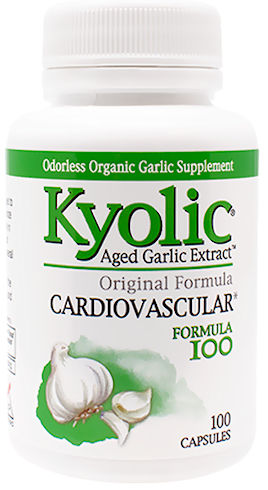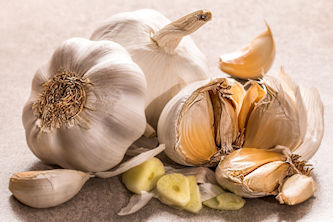- Improving lives since 2002
- Fast, Friendly Service
- Free Nutritional Counseling
The key to health is eliminating toxicities and deficiencies! - Dr. William R. Kellas

Our proprietary method unlocks garlic’s hidden power, neutralizing harsh organosulfur compounds and enhancing its bioavailability. The result? A potent, odor-free formula that supports cardiovascular health, immune strength, and overall vitality — without the burn, without the aftertaste.
Garlic in general increases by up to 75% the assimilation of nutrients from those foods already in one's stomach (boosting the nutrition obtained from all foods one eats at the same time), boosts immune system function, improves cardiovascular function, and provides numerous important nutrients such as Vitamin B6 (96% of MDR), Manganese (80% of MDR), Selenium (26% of MDR) and Zinc (12% of MDR). Along with Beets, Garlic is in the ranks of the top healthiest foods on earth. This version of garlic has greater nutritional impact with no resulting bad breath!
The unvarnished truth is that much (perhaps most) of the nutrients people eat go right through their gastrointestinal tract, go nassimilated, and into into the toilet, making nutrient-rich sewage, but not benefitting the person all that much.
Garlic in the gastrointestinal tract stimulates much higher assimilation (up to 75% more - see below) of nutrients out of the food one eats. It also boosts production of numerous antioxidants and enzymes in the body.
Seasoning food with alliums such as garlic adds flavor and increases the nutrients that the body is able to extract from food. Especially, high fiber plant foods like grains, beans and lentils are notoriously difficult for the stomach and intestines in regard to extracting their minerals. Most of the minerals simply go into the toilet. Eating those foods with garlic makes those trace minerals significantly more available, giving the person who eats garlic from 15 to 75 percent more mineral and trace mineral absorption. For no other reason, this should be enough for any health-minded person to add garlic to every meal.
The latest study for garlic absorption increase (Gautam et al. 2010) looked at raw or cooked grains, rice and sorghum, and pulses (dried legumes), whole green gram (a dried bean like legume) and chickpea. Grain/legumes were either plain (10 g) or had two levels of garlic (0.25 and 0.5 g/10g of grain/legume). Bioavailability of zinc and iron from each sample was determined using a simulated gastrointestinal digestion procedure.
Compositionally speaking, garlics contain numerous important nutrients. Although, the below list is far from comprehensive, 100 grams of garlics contain:
Garlics have received much attention by scientific researchers. Over the years, scientists have compiled extensive experimental data about the properties of garlics and outcome results of eating them in order to help quantify health improvements that people experience as a result of consuming garlics. There is now considerable evidence suggesting that virtually everyone could benefit from consuming garlics. Certainly, they improve digestion, immune strength, wound healing, production of antioxidants and enzymes, and overall vitality. Here is what scientists think they know:
Experiments suggest that:
In vivo, and clinical studies have demonstrated that the nutrients obtained from eating garlics have benefitted many individuals with such things as:

| Kℽolic Garlic | Omega Oils | ||
|---|---|---|---|
| EPA | DHA | ||
| Triglycerides |
|
|
|
| Cholesterol |
|
|
|
| Homocysteine |
|
--- | --- |
| Plaque in Arteries |
|
--- | --- |
| Blood Pressure |
|
--- |
|
| Endothelial Function |
|
--- | --- |
| Inflammation/ Oxidative Damage |
|
|
|
| Blood Clotting |
|
|
|
| Drug Interactions |
|
|
|
 Rishi Ternes, owner of New Earth Super Foods, left the study of medicine in Germany, came to the U.S. and turned his life over to the pursuit of nutrient dense food and seeking to understand the ability of food to transform health. He believes that “we are what we eat” and that “food should be our medicine”. Rishi owns a Super Food Cafe and Health Transformation Center in Arroyo Grande, California. He continues to search the world for foods that enable to the body to repair itself. As Rishi says, “the nutrients that your body needs are in the foods you aren’t eating.”
Rishi Ternes, owner of New Earth Super Foods, left the study of medicine in Germany, came to the U.S. and turned his life over to the pursuit of nutrient dense food and seeking to understand the ability of food to transform health. He believes that “we are what we eat” and that “food should be our medicine”. Rishi owns a Super Food Cafe and Health Transformation Center in Arroyo Grande, California. He continues to search the world for foods that enable to the body to repair itself. As Rishi says, “the nutrients that your body needs are in the foods you aren’t eating.”Food is the way of health not vitamins!
Green Powder Superdrink fits with the “first rule of health” which is that food should be our medicine. Green Powder Superdrink also fits with our second rule of health, which is that food engenders health, not vitamins. The United States has among the worst health statistics of all industrialized nations, yet the people of the United States consume more vitamins that the rest of the world combined. That means that you will eventually find, as so many others have already found, that your health will never really start to improve until you give up on vitamins and turn to food. It's time to turn to food!
Comparative Retail Price: $19.95 or $38.95
Our Price: $11.84 (100 capsules) or $20.77 (200 capsules)
Green Powder Superdrink (GPS)

|
|||||||||||||||||||||||||||

Take one to three capsules, one to three times daily.
We disclaim any claims (if there are any) made in these videos. They are for information, education, enlightenment and entertainment only.
Copyright 2002 - 2024. All rights reserved.
These statements have not been evaluated by the Food and Drug Administration. No product mentioned herein is intended to diagnose, treat, cure or prevent any disease. If you are pregnant, nursing, taking medication, or have a medical condition, consult your physician before making any lifestyle change, including trying a new product or food.
The information on this website is intended as a sharing of knowledge and information from the research and experience of the Healthy-Living.Org staff and contributors. It is not intended to replace a one-on-one relationship with a qualified health care professional and it is not intended as medical advice. You should not use the information on this site for diagnosis or treatment of any health problem or for modification of any medication regimen. You should consult with a healthcare professional before starting any diet, exercise or supplementation program, before starting or discontinuing any medication, or if you suspect you have a health problem. You should keep in mind that cited references to ongoing nutritional scientific study are most likely not accepted by the FDA as conclusive. These references and mentions of benefits experienced by others are disavowed as product claims and are only included for educational value and as starting points for your own research. No food or supplement can be considered safe for all individuals. What may benefit 999,999 of a million people may harm you. Therefore, no one can take responsibility for your health except you in concert with your trusted health professional.